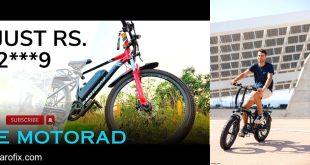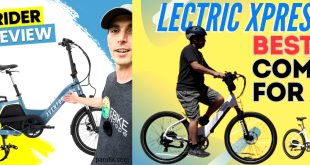Is a High End Electric Mountain Bike a Must?
Electric mountain bikes (e-MTBs) have transformed the way we hit the trails. They combine raw off-road fun with a little technological magic, letting riders climb steep hills, tackle technical terrain, and cover more ground without wiping out halfway through the trail. But here’s the million-dollar question: do you really need a high-end electric mountain bike, or can a mid-tier option get you rolling just fine?
What Makes an Electric Mountain Bike “High-End”?
When we talk about high-end e-MTBs, we’re referring to bikes that often cost upwards of $5,000 and come loaded with premium components. But what does that actually mean in technical terms?
- Motor and Power: High-end e-MTBs often feature top-of-the-line motors like the Bosch Performance Line CX or Shimano EP8. These motors offer smooth, responsive torque, hill-climbing efficiency, and long-term reliability. Entry-level motors might struggle on steep trails or heavy riders, producing a jerky or slow response.
- Battery Life and Range: Premium models typically use high-capacity batteries (700Wh+) that can handle long rides or all-day trail adventures. Cheaper bikes might max out around 400–500Wh, limiting your ride time and range.
- Suspension and Frame Quality: High-end e-MTBs have lightweight carbon or high-grade aluminum frames paired with sophisticated suspension systems. Expect adjustable rear shocks, air forks, and dropper posts. These features drastically improve control, comfort, and ride efficiency.
- Drivetrain and Brakes: Premium bikes use 12-speed drivetrains, wide-range gearing, and hydraulic disc brakes. These components are more precise, durable, and require less maintenance compared to lower-end options.
In short, a high-end e-MTB provides superior performance, reliability, and comfort. But does that mean you absolutely need one? Let’s dive deeper.
Beginner vs. Experienced Riders: Do You Really Need the Best?
When I first hopped on an e-MTB a few years ago, I went straight for a mid-range model—around $2,500. The bike was fun, smooth, and got me up hills I would’ve cursed on a regular MTB. I quickly realized that unless you’re tackling steep, technical trails daily or racing, a high-end e-MTB isn’t strictly necessary. Here’s a breakdown:
- Beginners: Mid-range e-MTBs are usually enough to learn proper handling, braking, and climbing. You can still explore trails without breaking the bank. Don’t forget: learning technique matters more than having the fanciest suspension or motor.
- Experienced Riders: If you’re pushing limits on aggressive terrain, heavy jumps, or long endurance rides, a high-end e-MTB offers stability, precision, and durability that can be worth every extra dollar.
My personal experience? I upgraded to a high-end model after logging hundreds of miles on my mid-tier bike. The difference was night and day on technical descents and steep climbs. But on casual weekend rides, the mid-tier still did the job just fine.
Performance vs. Cost: Where’s the Sweet Spot?
High-end e-MTBs are tempting, but let’s talk numbers. You might pay double or triple for premium bikes, yet in everyday trail use, the difference isn’t always as dramatic as the price suggests. Here’s what to consider:
- Trail Frequency: If you ride occasionally, a high-end bike may be overkill.
- Technical Needs: For steep climbs, rocky descents, or heavy riders, a high-end motor and suspension improve performance.
- Longevity: Premium components last longer and require fewer repairs, which could save money over time.
Bottom line: if you’re riding a few times a week on moderate trails, a mid-range e-MTB can deliver almost all the thrill for a fraction of the cost. But if you’re an all-out enthusiast, the high-end gear can truly elevate your ride.
Frequently Asked Questions (FAQ)
Do I need a high-end motor for mountain trails?
Not necessarily. For moderate trails and casual rides, mid-tier motors provide plenty of torque and efficiency. High-end motors shine on steep climbs, technical terrain, and long rides, offering smoother pedal assist and longer durability.

Is a high-end suspension worth it?
High-end suspension improves comfort, control, and speed on rough trails. For beginners or casual riders, basic air forks and rear shocks are adequate, but aggressive riders will notice a huge difference in handling and fatigue reduction.
What about battery life?
High-end e-MTBs often come with larger batteries for extended rides. If you’re planning all-day excursions or multi-day trips, the extra capacity is a big plus. Otherwise, a 400–500Wh battery is sufficient for typical 20–40 mile rides.
Can I upgrade a mid-range e-MTB later?
Absolutely. You can replace components like tires, brakes, suspension, and even batteries on mid-range models. This approach lets you experience high-end features gradually without paying top dollar upfront.
Are high-end bikes more sustainable?
Indirectly, yes. Durable, long-lasting components mean less frequent replacements, reducing waste. Additionally, any e-MTB—regardless of price—promotes eco-friendly transport by replacing car trips with pedal-assisted rides.
Practical Tips for Choosing Your E-MTB
- Test Rides Matter: Never buy online without testing. Comfort, fit, and handling are crucial.
- Think About Terrain: Match your bike to your trails. Rocky, hilly areas benefit more from high-end suspension and motor than flat, mild trails.
- Maintenance: Regularly clean and lubricate your drivetrain, check brake pads, and maintain suspension. Even a high-end bike can degrade if neglected.
- Upgrade Strategically: If starting with a mid-range e-MTB, focus upgrades on components that will make the biggest difference first—tires, brakes, and suspension.
Future Trends in Electric Mountain Bikes
The e-MTB market is evolving fast. Here’s what’s coming:
- Smarter Motors: AI-assisted torque and ride analytics will optimize power output in real time.
- Longer-Lasting Batteries: Solid-state and higher-capacity batteries will extend rides while reducing charging frequency.
- Lighter Materials: Carbon and advanced alloys will make e-MTBs lighter, more agile, and energy-efficient.
- Sustainable Manufacturing: More brands are using eco-friendly materials, recyclable batteries, and sustainable production methods.
- Connected Tech: Integrated GPS, trail mapping, and performance tracking are becoming standard.
These innovations will make e-MTBs more accessible, environmentally friendly, and enjoyable for all types of riders.
Conclusion: Is a High-End E-MTB Really a Must?
The short answer: it depends. For beginners, casual riders, and moderate trail enthusiasts, mid-range e-MTBs are more than capable of providing fun, efficient, and sustainable rides. High-end e-MTBs shine for aggressive riders, steep technical trails, and long-distance adventures. They offer superior components, better handling, and a smoother, more reliable experience—but they aren’t strictly necessary for everyone.
From my personal experience, the ride quality difference is noticeable but not always essential. The thrill of climbing a hill without breaking a sweat or exploring new trails is achievable on both mid-tier and high-end models. What matters most is matching the bike to your riding style, terrain, and goals while embracing sustainable, eco-friendly mobility.
Highlight Tip: Start with what fits your budget and ride style. Enjoy the trails, upgrade strategically, and remember—the best e-MTB is the one that gets you out riding, not necessarily the one with the fanciest components.
So, is a high-end e-MTB a must? No. But if your heart races for adrenaline, tech, and precision, it might just be worth the splurge.
 Electric Bike & Bicycle Repair Hub Master DIY electric and traditional bike repairs with practical tips and trusted product recommendations.
Electric Bike & Bicycle Repair Hub Master DIY electric and traditional bike repairs with practical tips and trusted product recommendations.



